One thing’s for sure; the biceps of most people could use more size and shape. Having a pair of peaked biceps makes you look like you actually lift and could be the difference between you winning your show and settling for 5th place if you’re a bodybuilder.
This guide shows you how to build bicep peak size and shape so that you know which regions of your biceps and upper arms to focus on.
Then you’ll learn the absolute best bicep workout for peak development. This is a highly effective routine that you can perform to make your biceps appear taller and wider. I’ve used this workout for years—with great success, might I add—to get bigger bicep peaks, and my clients have achieved similar transformations by following the program.
7 best bicep peak exercises
Just before we get into my monster bicep peak workout, let’s explore the individual exercises in more detail so that you understand exactly how to perform them for the fastest and best results.
1. Incline dumbbell curl
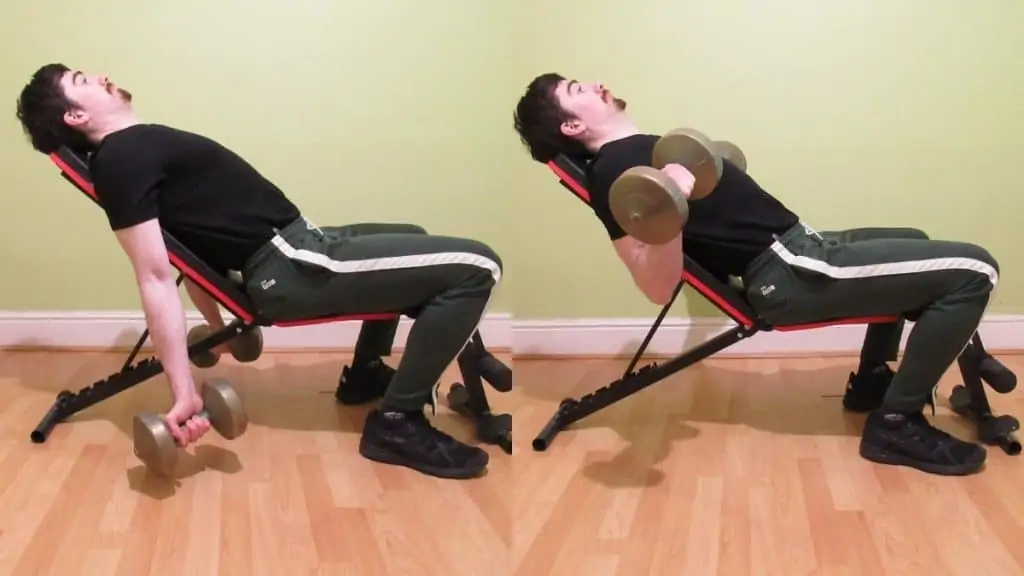
As a rule of thumb, any exercise that has you curl with your hands or elbows behind your torso or hips will help you build big bicep peaks by emphasizing the long (outer) head of your biceps.
In this regard, incline seated dumbbell curls are one of the best bicep exercises for peak development. Not only do incline curls shift the emphasis onto the outer muscles fibers of your biceps—and thus help to grow your peak—but they’re also excellent for building overall mass because they break down colossal amounts of muscle fibers by placing your biceps under a tremendous stretch.
Having more bicep mass in general can never hurt. And you never know; that lack of size (rather than your genetics) may actually be what’s holding your peak development back from reaching its full potential.
- Position the backrest of an adjustable bench to between 45 and 60 degrees.
- Grab two dumbbells with an underhand grip.
- Sit on the bench and lie against the back pad.
- Let your arms hang over either side of the bench so that the weights are behind your hips.
- Curl the dumbbells toward your shoulders while keeping your elbows still.
- Keep lifting the weights until the undersides of your forearms make firm contact with your biceps.
- Squeeze your biceps forcefully at the top of the rep and hold the peak contraction for a moment.
- Lower the weights back down in a controlled manner until your elbows reach full extension.
- Repeat for 3-5 sets of 6-12 reps.
2. Drag curl

The drag bicep curl is an old-school bodybuilding exercise that serious lifters have been using for decades to build impressive, mountainous bicep peaks. Since the bar remains against your body throughout the whole duration of the set, the long head of your biceps has to handle most of the tension, which, as you already know, is the head that’s most responsible for the appearance of huge bicep peaks.
Building biceps peak size, however, requires strict form and attention to detail. So with drag curls, you want to avoid shrugging the weight up with your traps. While it’s okay to feel some upper trap activation (emphasis on some), the exercise shouldn’t actually become a shrug; your biceps should do most of the lifting.
If you’re struggling to keep your big strong traps at bay, try and depress your scapula (basically the opposite of a shrug) while you drag the bar up your body. Also, try and think—really focus intently in your mind—on squeezing your biceps as hard as you can on each rep. These mental cues will improve your mind-muscle connection and thus make your bicep peak exercises even more effective.
- Load some weights onto either side of a barbell.
- Grab the bar with an underhand grip just inside shoulder-width.
- Drag the bar up your body by moving it toward your chest. Let your elbows drift behind your torso as you do this.
- Squeeze your biceps forcefully as they make contact with the undersides of your forearms.
- Hold the peak contraction for a moment.
- Lower the bar under control until your arms are almost locked out (it’s okay to use constant tension on drag curls).
- Repeat for 3-5 sets of 10-15 reps.
3. Behind the back cable curl
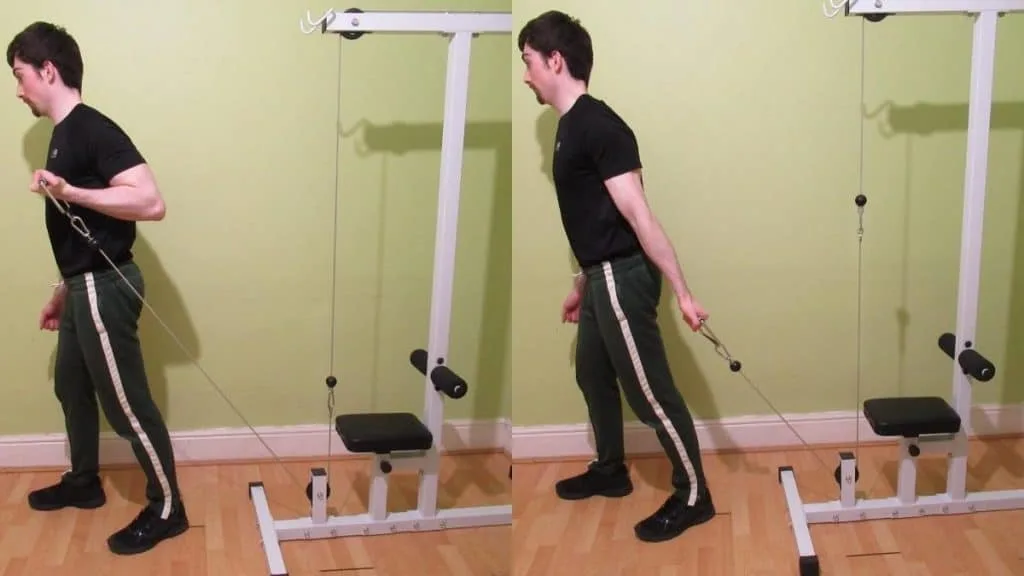
Building bicep peak size is only useful if that mass comes with enough symmetry. Otherwise, nobody will notice your peak because they’ll just be focusing on your muscle imbalances.
This is where the behind the back one arm cable curl comes in handy. By having you train each arm separately—and behind your back—this killer cable curl variation builds a huge biceps peak (genetics permitting) while ensuring that both of your arms grow in proportion to one another.
Moreover, because you’re using cables, your biceps have to work much harder because they can’t rest at the bottom of each rep like they can with free weight curls. This naturally results in a stronger pump and better bicep stimulation because there’s no chance for the lactic acid to escape until the set is over.
- Connect a single handle to a low pulley.
- Grab the handle with one arm and then face away from the pulley.
- Step away from the machine so that your hand and arm are behind your body.
- Curl the handle toward your shoulder by flexing your biceps.
- Keep lifting until your biceps and forearm make forceful contact (until you can’t lift the handle any higher).
- Hold the contraction for a moment.
- Lower the handle in a controlled manner until your elbow reaches full extension.
- Repeat with your other arm and do 3-5 sets of 10-15 reps per side.
4. Narrow grip EZ bar curl
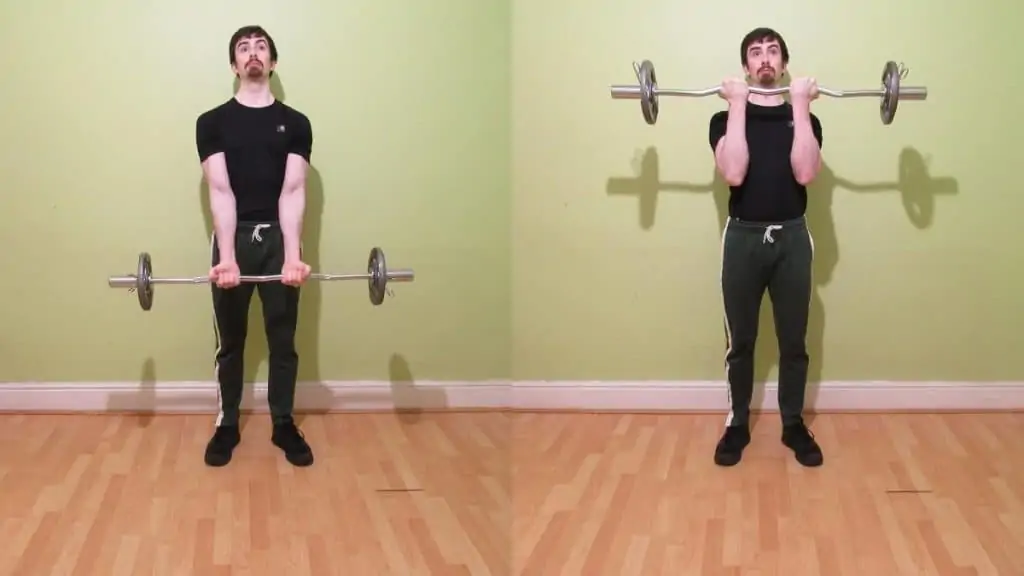
Narrow EZ bar curls are one of the best exercises for bicep peak development. This is because when you curl with a close grip, your shoulders naturally rotate inward a bit, which shifts the emphasis onto the outer muscle fibers of your biceps (I.e., the area that’s responsible for building bigger bicep peaks).
The trick is to make sure that the bar doesn’t drift too far in front of your body while you’re curling. If you let the bar come too far forward, then you’ll put more emphasis on the inner muscle fibers of your biceps. So keep the bar close to your body without actually dragging it up your torso (that’s a different exercise, remember?).
- Load some weight onto either side of an EZ bar. For more convenience, use a preloaded curl bar.
- Grab the bar with a narrow-underhand grip.
- Curl the bar toward your chest while keeping your elbows still.
- Keep lifting the weight until your biceps and forearms make firm contact.
- Squeeze your biceps at the top of the rep and hold the peak contraction for a second.
- Lower the bar under control until your elbows are fully locked out.
- Perform 3-5 sets of 8-12 reps.
5. Cross body hammer curl
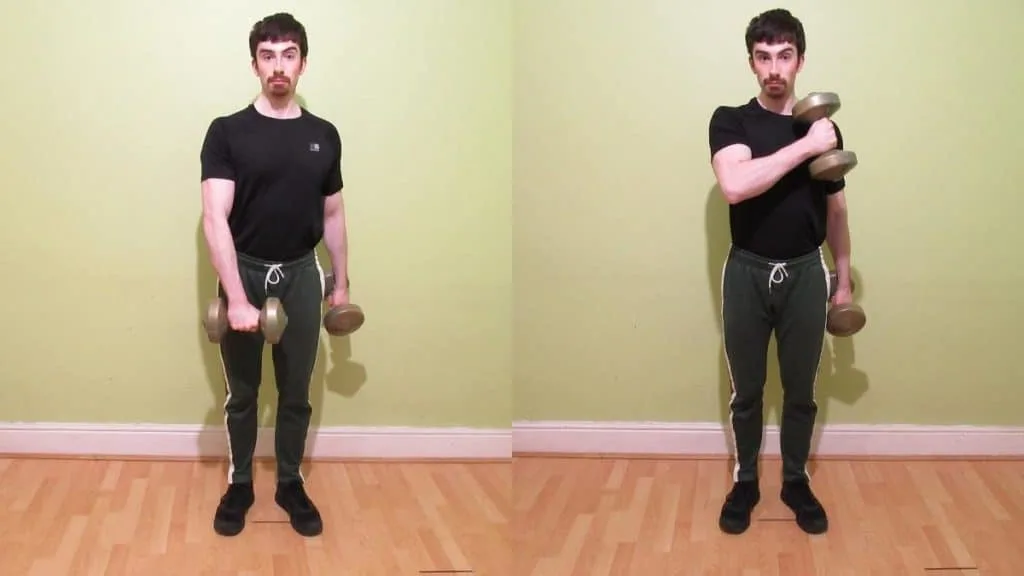
The cross body hammer curl, also known as the pinwheel curl, makes an excellent addition to any biceps shape workout since it can really improve your peak. This is because the movement has you curl with your shoulder in full internal rotation, which naturally recruits more muscle fibers in the outer region of your biceps and thus builds the peak.
The cross body curl is also helpful for developing symmetrical biceps because it forces you to train each arm separately. This unilateral training style actually makes you stronger as well since your brain only has to focus on moving one limb at a time.
- Hold a pair of weights by your sides with a neutral grip.
- Curl one of the dumbbells across your body toward your opposite shoulder.
- Keep curling until your forearm makes forceful contact with your biceps.
- Hold the contraction for a brief moment and then lower the weight under control until it’s back by your side.
- Repeat the motion with your other arm and do 3-5 sets of 6-12 reps per side.
6. Reverse grip EZ bar curl

If you want to know how to get biceps peak mass, I’ll let you into a little secret: Build your brachialis.
The brachialis is a powerful elbow flexor that lies beneath the biceps. As such, you can actually push your biceps out and increase the prominence of your peak by building your brachialis.
But to train your brachialis optimally, you need to put your biceps at a mechanical disadvantage so that they’re not fighting with your brachialis to flex the elbow. Curling with an overhand grip is the easiest and most effective way to train the brachialis (and the brachioradialis, for that matter) because such a grip places the biceps in a weak position where they can’t produce much force.
Reverse grip EZ bar curls are the exercise of choice because EZ bars are really easy to grip, and they don’t put as much strain on your wrists as straight bars. Therefore, you can focus purely on the working muscles rather than on finding a grip that doesn’t irritate your joints (typical barbell problem).
- Load some weights onto an EZ bar.
- Grab the bar with a thumbless-overhand grip just inside shoulder-width.
- Curl the bar toward your chest while keeping your elbows stationary.
- Keep lifting the weight until the tops of your forearms make firm contact with your biceps.
- Hold the contraction for a moment at the top of the rep.
- Lower the bar back down in a controlled manner until your elbows are locked out.
7. Alternating dumbbell curls
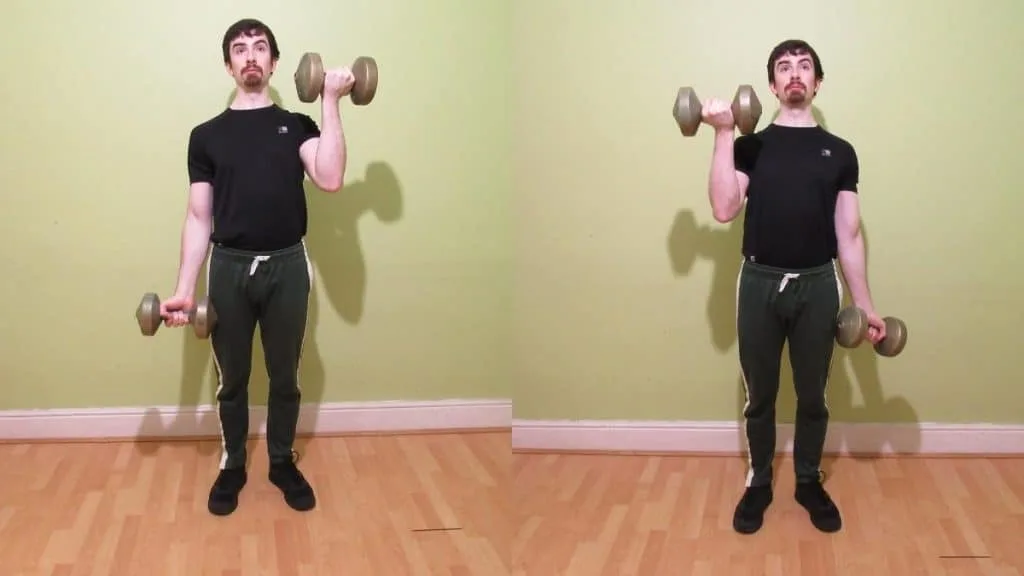
While it’s possible to fill your bicep peak workouts with exercises that focus primarily on the long head, sometimes you just need more overall mass, in which case, you want to make sure that you’re hitting the short head sufficiently as well. You can see our short head bicep exercises guide for more info on that.
Alt DB curls work both parts of the biceps fairly evenly because the weights are by your sides rather than behind or in front of your body.
Curling in an alternating fashion also increases your strength because less core stability is required to lift one weight than to lift two.
Just make sure to really twist your wrists at the top of each rep to generate the strongest possible peak contraction. Since the biceps supinate the forearm as well as flex the elbow, you need to perform both functions—ideally simultaneously—if you want to build the biggest bicep peak that your genes are capable of creating.
- Hold a pair of dumbbells by your sides with a supinated grip.
- Curl one weight toward your shoulder while keeping your other arm completely still.
- Keep curling until the undersides of your forearms press right up against your biceps.
- Squeeze your biceps forcefully and turn your little finger away from your body at the top of the rep.
- Hold the contraction for a brief moment and then lower the weight back to your side in a controlled manner.
- Repeat with your other arm and do 3-5 sets of 6-12 reps per side.
The best bicep workout for peak development
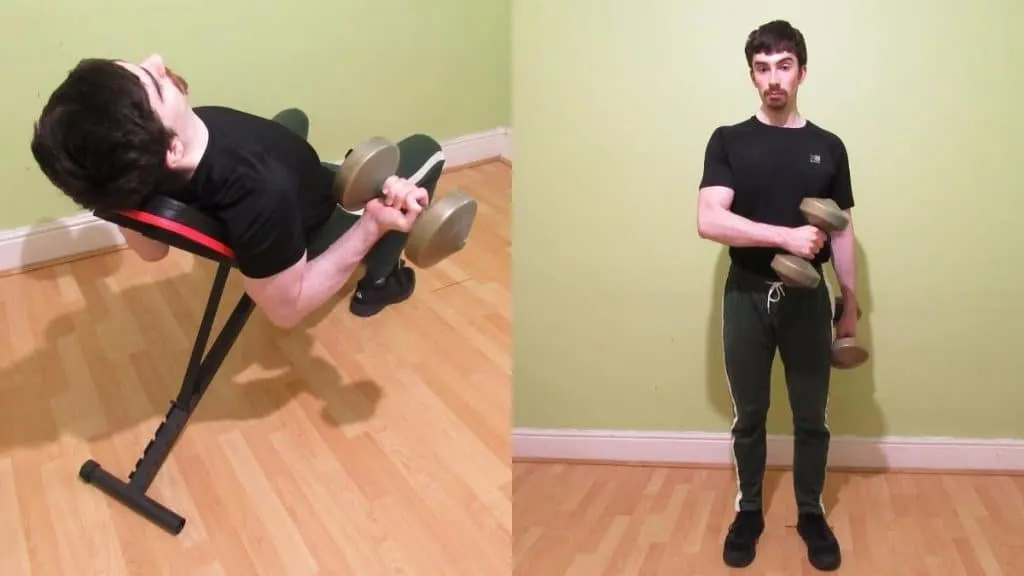
1: Incline curls — 3-5 sets of 6-10 reps
2: Cross body hammer curl — 3-5 sets of 6-10 reps
3: Behind the back cable curl — 3-5 sets of 10-12 reps
4: Reverse curl — 3-5 sets of 10-15 reps
5. Drag curl — 3-5 sets of 15-20 reps
This is the best biceps workout for shape and peak development because it focuses on building the brachialis and biceps long head, which, as mentioned, are the two muscles that are most responsible for creating peaked biceps.
The monster bicep peak workout begins with incline curls to give your biceps that critical, growth-provoking weighted stretch that breaks down the maximum amount of fast-twitch muscle fibers.
Cross body hammer curls build the all-important brachialis while also helping to improve bicep peak size and prominence.
Then it’s time for you to work on your bicep symmetry with behind the body cable curls. This constant-tension mass-builder is arguably the best bicep peak exercise in existence because your bis don’t get a chance to rest until the set is over. This is because the pulley is constantly exerting some kind of force on your biceps.
Since one brachialis exercise just isn’t enough for developing huge bicep peaks, you’re also going to be performing reverse curls to train this powerful upper arm muscle. Make sure to use a thumbless grip so that you place even more tension on your brachialis and brachioradialis.
The session winds down with one of the best exercises for building bicep peak size: the drag curl.
You’re doing this movement last in the workout because it creates the strongest peak contraction out of all the exercises. Therefore, it’s the most optimal movement for giving your biceps a final, growth-stimulating pump before leaving the gym.
Rest 2-3 minutes between sets and leave 1-3 reps in reserve on each set.
How much does genetics affect your bicep peak?
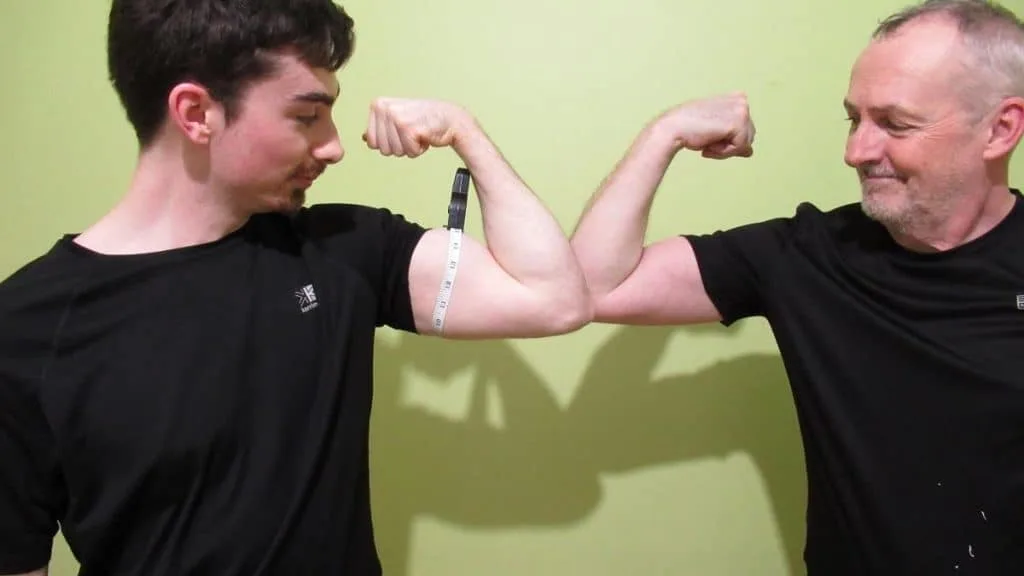
Your genetics definitely play a significant role in the shape and thus the peak of your biceps. Some people, for example, have really long biceps that look good when relaxed but which don’t look particularly tall or peaked when flexed because the muscle, having a longer insertion, simply isn’t as bunched up.
Conversely, some lifters have short biceps that might appear to lack fullness when their arms are just hanging by their sides. But when these folks flex their arms, they tend to have very peaked biceps because the muscle is so compact; their biceps are round rather than long.
So while you can’t change the genetically determined shape of your biceps, you can maximize your overall muscle mass, which will go a long way to enhancing your peak.
How to get a bigger bicep peak
If you want to learn how to get bicep peak development that turns heads in the gym, make sure to follow these four bodybuilding principles so that you’re doing everything in your power to improve your bicep shape. You don’t want to leave anything to chance.
Build your brachialis
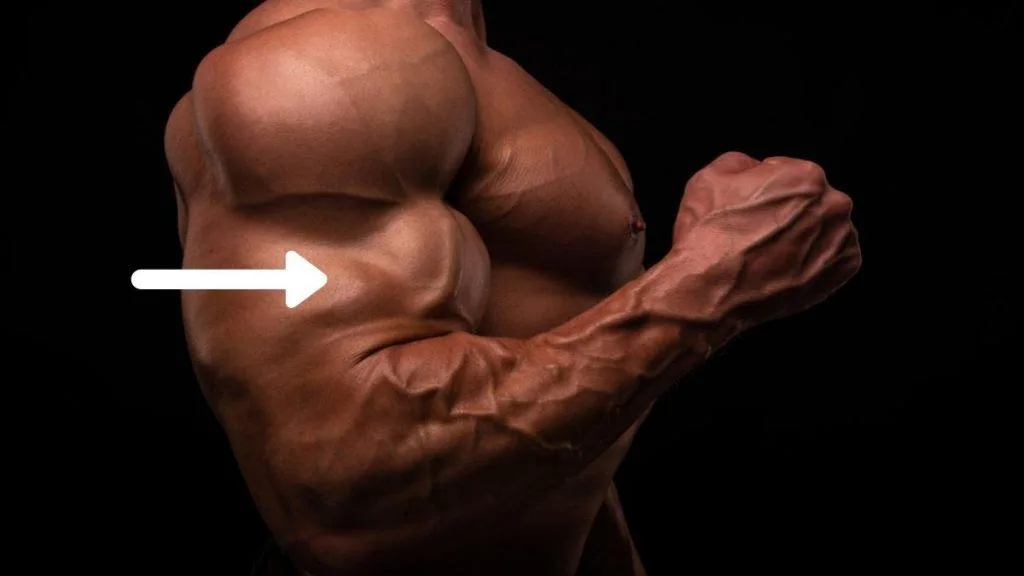
You would think, wouldn’t you, that the best exercise for bicep peak development would be the one that also best isolates the biceps brachii. Well, this may or may not be the case for you, depending on your individual weak points.
Let’s say that you already have well-developed biceps but still lack that prominent peak. If you’ve ruled out unlucky peak genetics as the cause for your flat biceps, then there’s a good chance that you need to build your brachialis.
Not to be confused with the brachioradialis, which is a thick forearm muscle; the brachialis is a deep upper arm muscle that lies beneath the biceps. As such, when you add mass to your brachialis by performing reverse curls and hammer curls, you are—often inadvertently—pushing your biceps out and increasing the size of your peak.
Ultimately, if conventional bicep peak exercises don’t do the trick, then it may actually be within your best interest to start your bicep peak workouts with reverse curls so that you can train your brachialis when you’re at your freshest.
There’s no need for any advanced bicep exercises, either. Reverse curls are straightforward and are capable of building plenty of mass if you train both intensely and consistently.
Focus on long head development
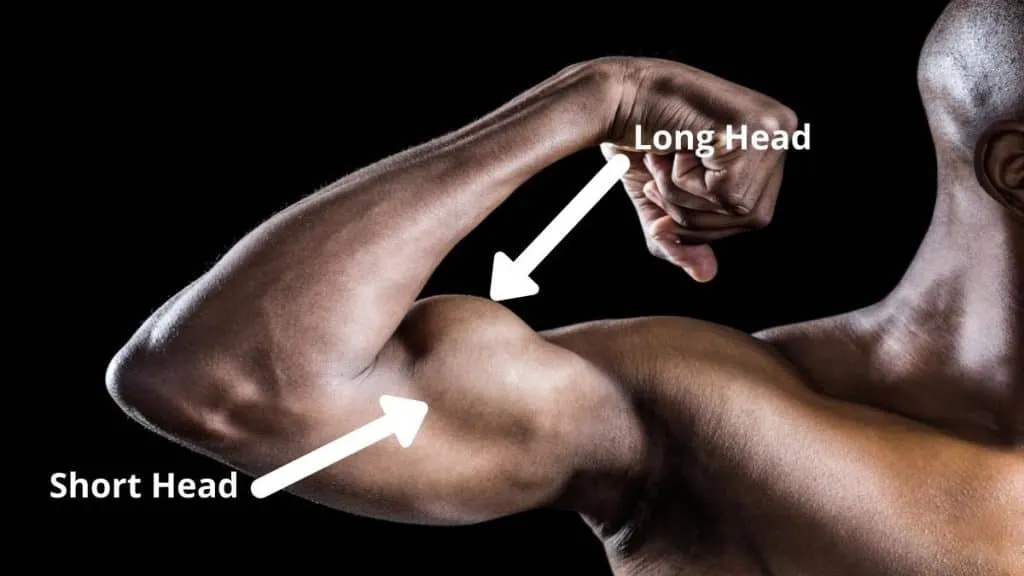
Performing a well-thought-out long head bicep workout will help you to build a bigger bicep peak because it’s the long head that’s visible when the biceps are viewed in a flex position from behind.
While you can’t isolate a specific part of the biceps, you can certainly emphasize different regions by deploying an intelligent exercise selection in your workout.
Incline curls, and other such exercises that have you curl with your arms behind your torso, will shift the emphasis onto the outer muscles fibers of your biceps and thus help to create a taller peak.
Curling with a close-grip has a similar effect, providing that you don’t let the bar drift too far in front of your body, in which case the short (inner) head will actually take over the movement.
Make sure that you give these exercises enough time to display their effects. Muscle growth, as you probably know by now, doesn’t happen overnight or even in a week. Stick with a good bicep peak workout for 8-12 weeks, and then you might just see your biceps start to change shape and become taller.
Gain more mass
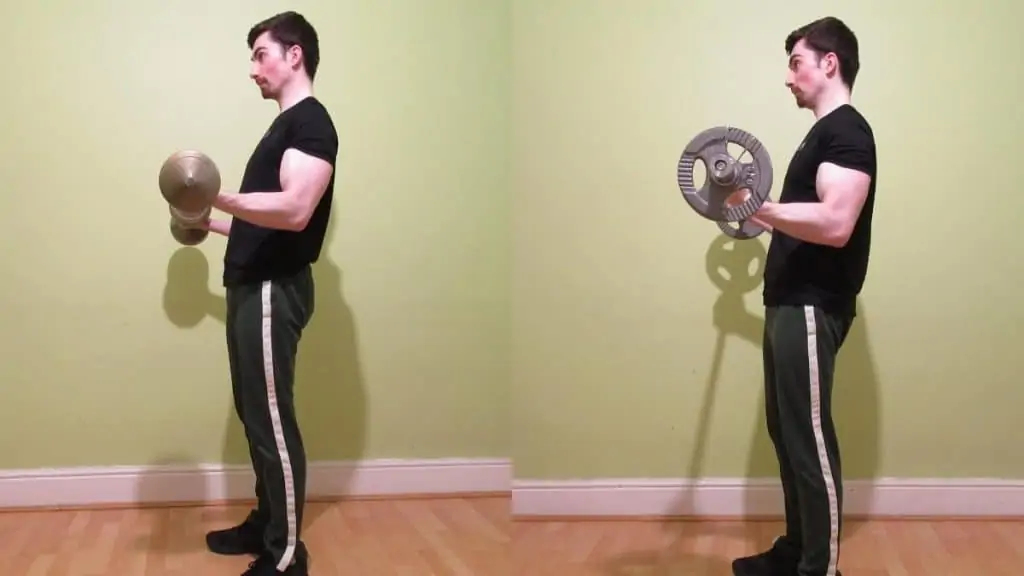
Do you have bad bicep peak genetics? Or are you just lacking overall mass?
You could have the best bicep peak genetics that the world has ever seen. But if your biceps lack that critical foundation of mass, then your top-tier genetics aren’t going to help you.
If you want to look big, then you need to get big.
Gaining mass requires you to consume a high-protein, calorie-surplus diet while getting adequate recovery and performing enough training volume (reps x sets x weight) that’s taken close enough to failure to stimulate hypertrophy.
That’s all there is to it.
We covered the workout part of the equation in this article, but the devil is in the detail. Make sure that you’re resting enough time (2-3 minutes ideally) between sets so that your strength doesn’t drop off too dramatically.
Yet, you also need to train close enough to failure so that you’re recruiting the maximum amount of muscle fibers over the course of your workout. In practice, this means that you shouldn’t leave more than 2-3 reps in the tank on your sets.
Lose some body fat
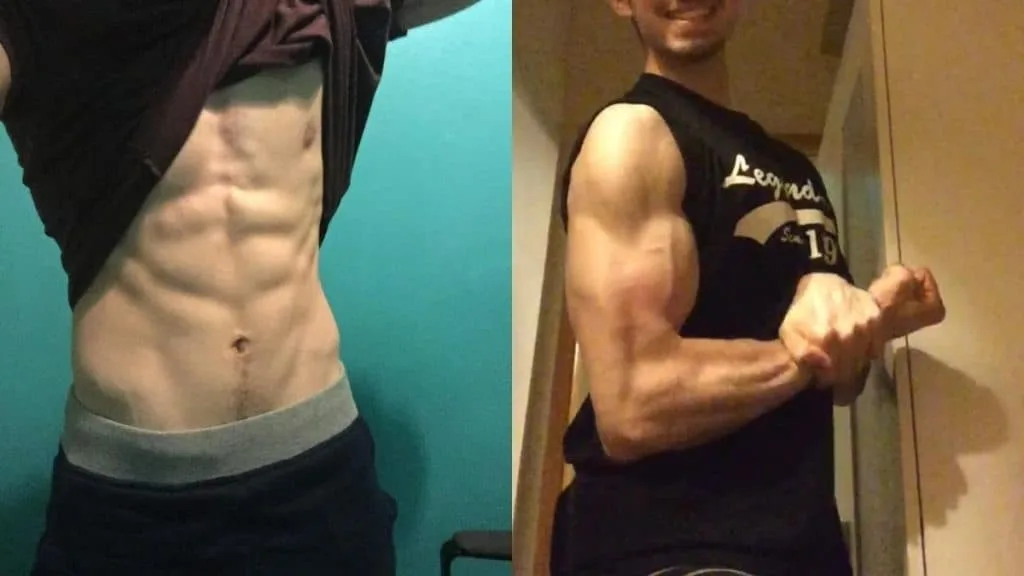
This one’s simple.
If you’ve got layers of fat covering your arms, then it doesn’t matter how good your bicep peaks are because nobody’s going to be able to see them.
So you can see our guide on how to get defined biceps if you want to get more cuts and striations in your upper arms to make your biceps more peaked.
Of course, losing body fat mainly comes down to your diet.
Specifically, you need to eat in a calorie deficit by expending more energy than you take in. But you also need to ensure that you have sufficient size under that fat so that the peaks actually look impressive when you do reveal them.
Improve your posing
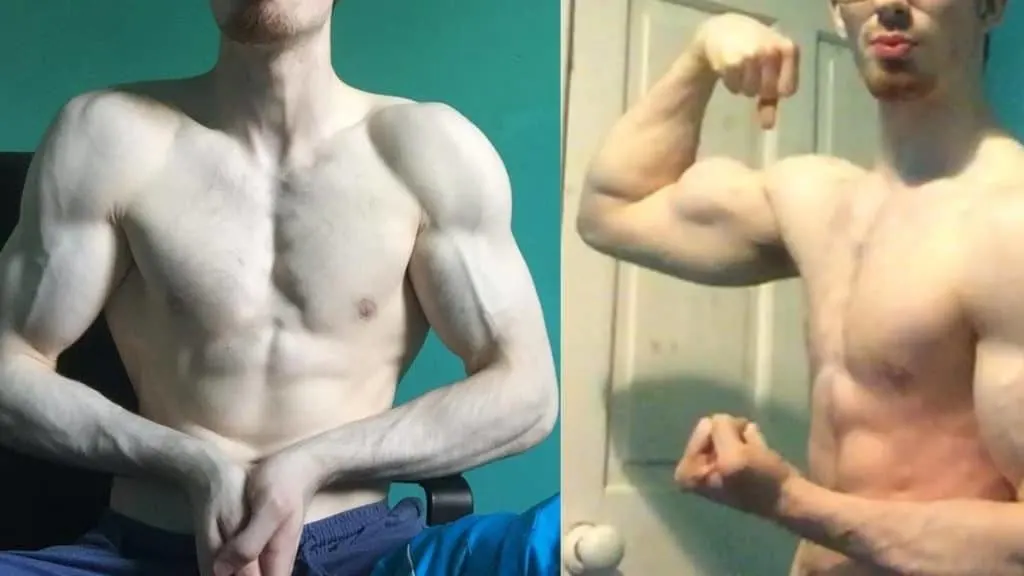
If you’re a bodybuilder or competitive physique athlete, then posing is of paramount importance. In fact, good posing, as we mentioned earlier, could mean the difference between winning your show and finishing in 5th place.
So if you actually want people to see your bicep peaks, then you need to know how to flex your arms properly.
The traditional bicep peak flex involves moving the undersides of your forearms toward your biceps and then squeezing the biceps themselves so that they “pop” up even more. You want your arm to be straight while you hit this pose. Otherwise, the judges won’t be able to see your peak.
You can improve your competency at this pose by holding the contraction for a few seconds on some of your bicep peak exercises. After all, posing is an isometric activity, so if you want to excel at it, then you need to get used to contracting your biceps for more than a second at a time.
So when you hold the peak contraction during a curl, you can essentially think of it as weighted posing. And if you can get good at weighted posing, then just imagine how easy regular posing will feel!
See also: Lower bicep workout
Conclusion: What’s the best exercise for bicep peak development?
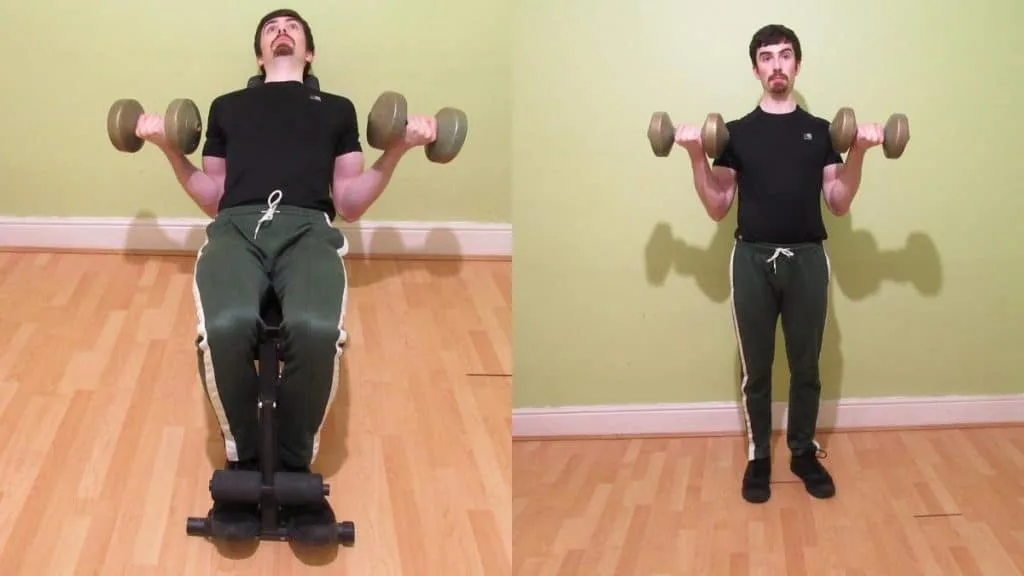
Overall, the best exercise for bicep peak development is, for most lifters, probably incline curls because they emphasize the long head (which is responsible for the peak) while also building that overall arm mass that every pair of biceps needs.
Of course, if you already have well-developed biceps but still lack that coveted peak, then reverse curls may actually be your best bet. This is because they train the brachialis, which, when well developed, actually pushes the biceps out (because the brachialis lies beneath the biceps) and makes them look more peaked.

